Secrets to Growing a Healthy Herb Garden
Discovering the art of cultivating a thriving herb garden is like unlocking a treasure chest of flavors right in your backyard. Imagine stepping outside and being greeted by the fresh scents of basil, rosemary, and mint, all ready for your culinary creations. Growing herbs isn't just about having fresh ingredients; it's about creating a sanctuary where nature and flavor intertwine. Whether you're a seasoned gardener or a curious beginner, this guide will equip you with essential tips and techniques for nurturing your herb garden to perfection.
First off, let's talk about why herbs are such a fantastic addition to any garden. Herbs are not only easy to grow but also incredibly versatile. You can use them in cooking, teas, and even for medicinal purposes. Plus, they attract beneficial insects and pollinators, contributing to a healthier ecosystem in your garden. With a little love and attention, you can cultivate a lush herb garden that provides bountiful harvests all season long.
But before we dig into the nitty-gritty of soil preparation and pest management, it's crucial to understand the importance of choosing the right herbs. Not all herbs thrive in every environment, and factors like climate, soil type, and your personal culinary preferences play a significant role in your herb-growing success. So, take a moment to think about what you love to cook with and what herbs grow best in your area. This thoughtful selection process sets the stage for a flourishing garden.
Now, let's get our hands dirty! Proper soil preparation is the foundation of healthy herbs. Think of soil as the bed where your plants will sleep. It needs to be rich, well-drained, and full of nutrients. Understanding the type of soil you have, along with its pH level, is essential in creating the ideal environment for your herbs. You can enhance your soil’s fertility by incorporating organic amendments like compost and worm castings, which act like a multivitamin for your plants.
Speaking of soil, did you know that good drainage is crucial for preventing root rot? Overwatering can be a silent killer in the garden, so it's important to create effective drainage solutions. You might consider raised beds or containers if your soil retains too much water. This way, you can control the moisture levels more easily and keep your herbs happy and healthy.
As you embark on this herb-growing journey, you'll also face the decision of whether to plant in containers or directly in the ground. Each method has its pros and cons. For instance, container gardening allows for greater control over soil quality and moisture, while in-ground planting can provide more space for your herbs to spread their roots. The choice ultimately depends on your space, lifestyle, and gardening goals.
In the next sections, we will dive deeper into watering techniques, pest management, and harvesting methods to ensure your herb garden thrives from planting to harvest. Remember, the goal here is not just to grow herbs but to cultivate an experience that brings joy and flavor into your life. So, let’s roll up our sleeves and get started!
- What are the easiest herbs to grow for beginners? Some great options include basil, parsley, and mint. These herbs are forgiving and grow well in various conditions.
- How much sunlight do herbs need? Most herbs thrive in full sun, which means they need at least 6 to 8 hours of sunlight each day.
- Can I grow herbs indoors? Absolutely! Many herbs can be grown indoors as long as they receive adequate light and proper care.
- How often should I water my herbs? It depends on the type of herb and the climate, but a good rule of thumb is to water when the top inch of soil feels dry.
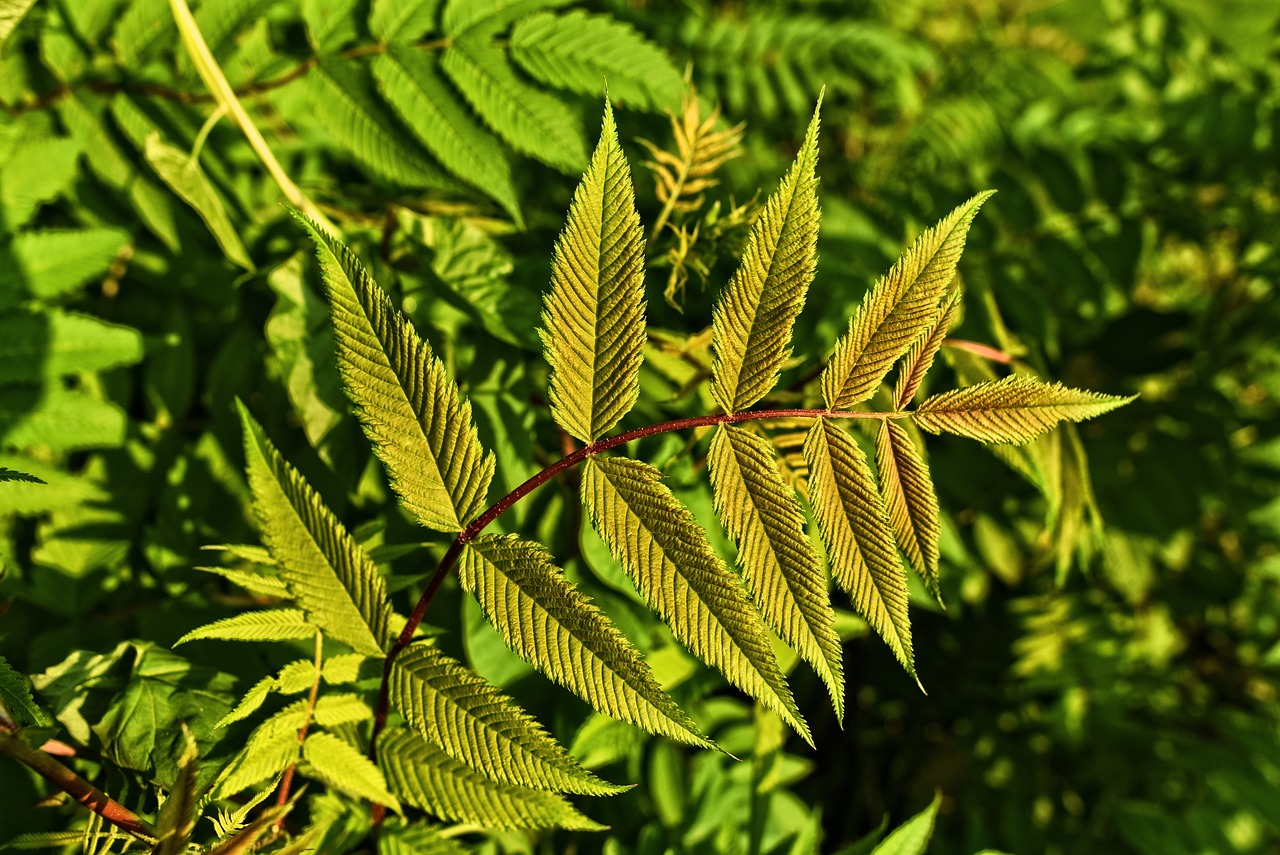
Choosing the Right Herbs
When it comes to growing a successful herb garden, is like picking the perfect ingredients for a gourmet dish—it's essential! The herbs you select will not only dictate the flavor profiles of your culinary creations but also influence how well they thrive in your garden. So, how do you make the right choices? First, consider your local climate. Some herbs, like basil and cilantro, love the warmth of summer, while others, such as parsley and chives, are more tolerant of cooler temperatures.
Next, think about your soil type. Herbs generally prefer well-drained soil, but some, like mint, can tolerate a bit more moisture. If you have sandy soil, you might want to choose drought-resistant herbs, whereas clay soil might necessitate herbs that can handle a bit of wetness. Also, don’t forget your culinary preferences. Are you a fan of Italian cuisine? Then rosemary, thyme, and oregano should be on your list. If Asian flavors excite your palate, consider adding lemongrass and Thai basil.
To help you visualize the best herbs for various conditions, here’s a simple table that outlines some popular herbs, their climate preferences, and their ideal soil types:
| Herb | Climate Preference | Soil Type |
|---|---|---|
| Basil | Warm | Well-drained |
| Parsley | Cool | Moist, well-drained |
| Mint | Moderate | Moist, rich |
| Thyme | Warm | Well-drained |
| Lemongrass | Warm | Rich, moist |
Additionally, think about space constraints. If you have a small balcony, you might want to opt for compact herbs like chives or even consider growing them in pots. On the other hand, if you have a spacious garden, you can indulge in a variety of herbs. Remember, herbs can also be grown indoors, so if you lack outdoor space, don’t fret—just place some pots on your kitchen windowsill!
Finally, consider your maintenance level. Some herbs, like rosemary, are relatively low-maintenance, while others may require more attention and care. Assess how much time you can realistically dedicate to your herb garden, and choose accordingly. By taking all these factors into account, you’ll be well on your way to creating a thriving herb garden that not only enhances your dishes but also brings a bit of nature into your home.
- What herbs are easiest to grow for beginners? Basil, chives, and mint are great starter herbs that are forgiving and versatile.
- Can I grow herbs indoors? Absolutely! Many herbs thrive indoors with sufficient light, such as on a sunny windowsill.
- How often should I water my herbs? It depends on the herb and the climate, but generally, herbs prefer to dry out a bit between waterings.
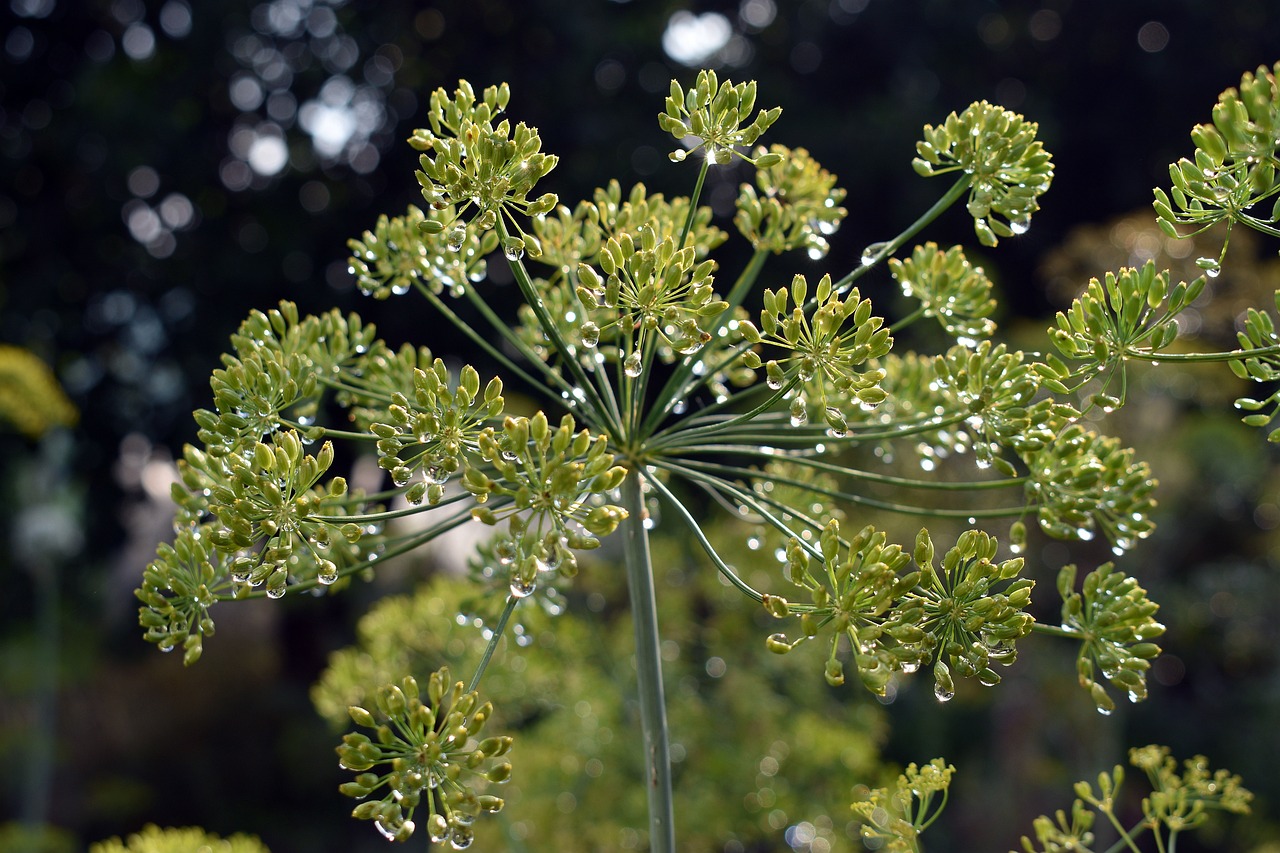
Soil Preparation Techniques
Proper soil preparation lays the foundation for healthy herbs. It's not just about digging a hole and throwing in a plant; it’s about creating an environment where your herbs can thrive. Think of the soil as the bed where your herbs will sleep and grow. You wouldn’t want to sleep on a lumpy mattress, right? Similarly, your herbs deserve a well-prepared, nutrient-rich bed to flourish.
To start, you need to understand the types of soil you have. Different herbs have different preferences when it comes to soil composition. For example, Mediterranean herbs like rosemary and thyme prefer well-draining, sandy soils, while others like basil thrive in richer, loamy soils. Conducting a simple soil test can help you determine your soil type and its nutrient content. You can buy a soil testing kit or send a sample to a local agricultural extension office for analysis.
Once you know your soil type, the next step is to check the pH levels. This is crucial because most herbs prefer a slightly acidic to neutral pH (around 6.0 to 7.0). If your soil is too acidic or too alkaline, your herbs won’t absorb nutrients effectively. To test your soil pH, you can use a home testing kit or a pH meter. If adjustments are needed, simple amendments like lime can raise pH, while sulfur can lower it. Here’s a quick table to summarize the pH preferences of some common herbs:
| Herb | Preferred pH Level |
|---|---|
| Basil | 6.0 - 7.0 |
| Rosemary | 6.0 - 7.5 |
| Mint | 6.0 - 7.0 |
| Thyme | 6.0 - 8.0 |
Now that you’ve assessed your soil type and pH, it’s time to consider organic soil amendments. These materials can significantly enhance soil fertility and structure. Compost is a fantastic option; it not only enriches the soil but also improves its water-holding capacity. If you have access to worm castings, they can also provide a nutrient boost that your herbs will love. Mixing in these organic amendments before planting can create a rich, loamy environment that encourages robust growth.
Another essential aspect of soil preparation is ensuring good drainage. Herbs are particularly susceptible to root rot, which occurs when the roots sit in waterlogged soil. To prevent this, you can create raised beds or use containers with drainage holes. If you’re planting directly in the ground, consider mixing in sand or perlite to improve drainage. A well-draining soil allows excess water to escape while retaining enough moisture for your herbs to thrive.
In conclusion, taking the time to prepare your soil properly is one of the best investments you can make for your herb garden. By understanding your soil type, adjusting pH levels, incorporating organic amendments, and ensuring good drainage, you set the stage for a flourishing herb garden that’s bursting with flavor. Remember, healthy soil leads to healthy herbs!
- What is the best type of soil for herbs?
The best soil for herbs is typically a well-draining, loamy soil enriched with organic matter like compost. - How can I test my soil?
You can test your soil using a home testing kit or by sending a sample to a local agricultural extension office. - Why is pH important for herbs?
The pH level affects nutrient availability; most herbs thrive in slightly acidic to neutral soil (pH 6.0 - 7.0). - How do I improve drainage in my soil?
You can improve drainage by adding sand or perlite to your soil mix, or by planting in raised beds or containers.
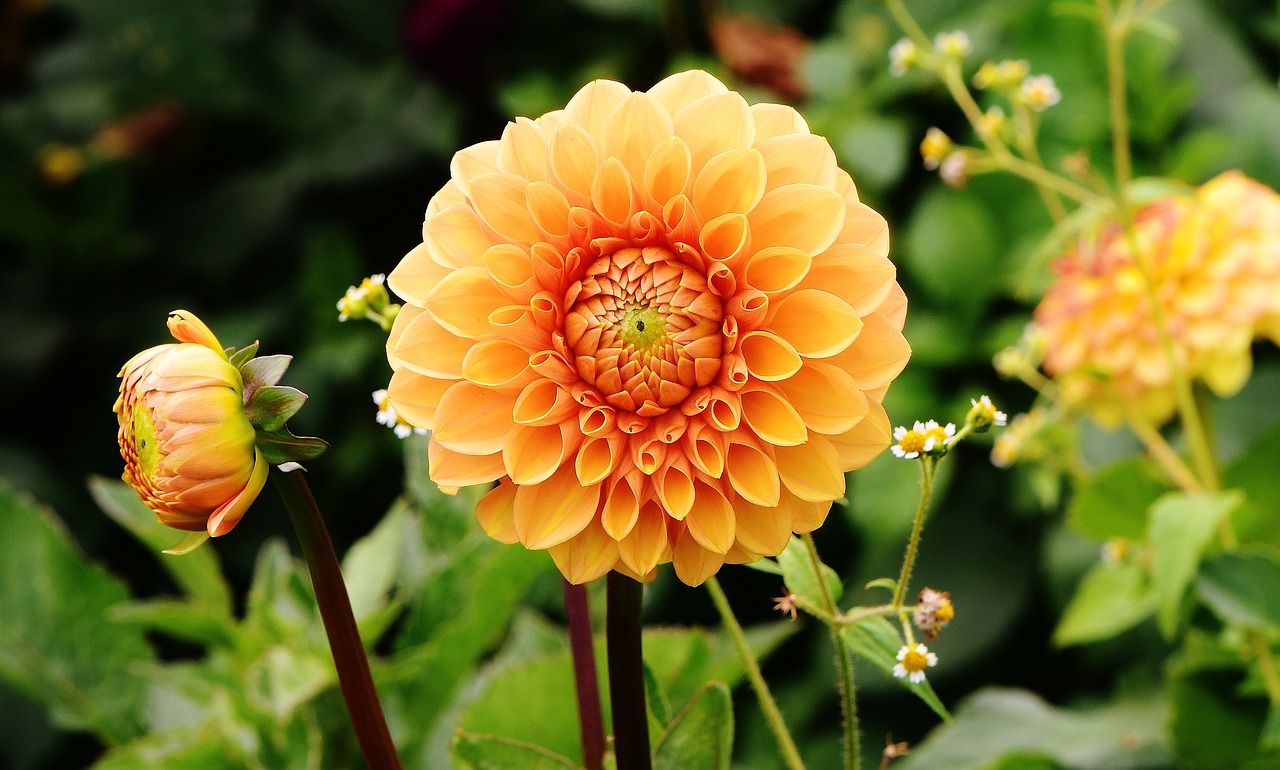
Testing Soil pH
Understanding soil pH is vital for the successful growth of your herbs. The pH level indicates how acidic or alkaline your soil is, which in turn influences nutrient availability. Most herbs thrive in a pH range of 6.0 to 7.0, which is slightly acidic to neutral. If your soil is too acidic or too alkaline, your herbs may struggle to absorb essential nutrients, leading to poor growth and flavor. So, how do you determine your soil's pH? It’s easier than you might think!
First, you can use a soil pH test kit, which is readily available at garden centers or online. These kits typically include a testing solution and a color chart to help you interpret the results. Alternatively, you can send a soil sample to a local extension service for a more precise analysis. This method provides detailed information not only on pH but also on nutrient levels and organic matter content.
Once you have your soil sample, follow the instructions provided with your test kit. Generally, you’ll mix a small amount of soil with distilled water and the testing solution. After a few minutes, compare the resulting color with the chart provided to find your soil's pH level. If the results show that your soil is outside the ideal range, don’t fret! There are several ways to amend your soil and bring it into the desired pH range.
For instance, if your soil is too acidic (below 6.0), you can add lime to raise the pH. On the other hand, if your soil is too alkaline (above 7.0), incorporating sulfur or peat moss can help lower the pH. Remember, it’s essential to make these adjustments gradually and retest your soil after a few weeks to monitor the changes.
In summary, regularly testing your soil's pH is a crucial step in maintaining a healthy herb garden. By understanding the acidity or alkalinity of your soil, you can make informed decisions about amendments, ensuring that your herbs receive the nutrients they need to flourish.
- How often should I test my soil pH? It's a good practice to test your soil pH at least once a year, especially before planting new herbs.
- Can I use household items to test soil pH? Yes, you can use vinegar and baking soda as a DIY method. Vinegar reacts with alkaline soil, while baking soda reacts with acidic soil, giving you a rough estimate of your soil's pH.
- What should I do if my soil pH is too low? Consider adding lime or wood ashes to gradually raise the pH level.
- Is there a specific time of year that's best for testing soil pH? Testing in early spring before planting is ideal, as it allows you to make necessary adjustments before the growing season.
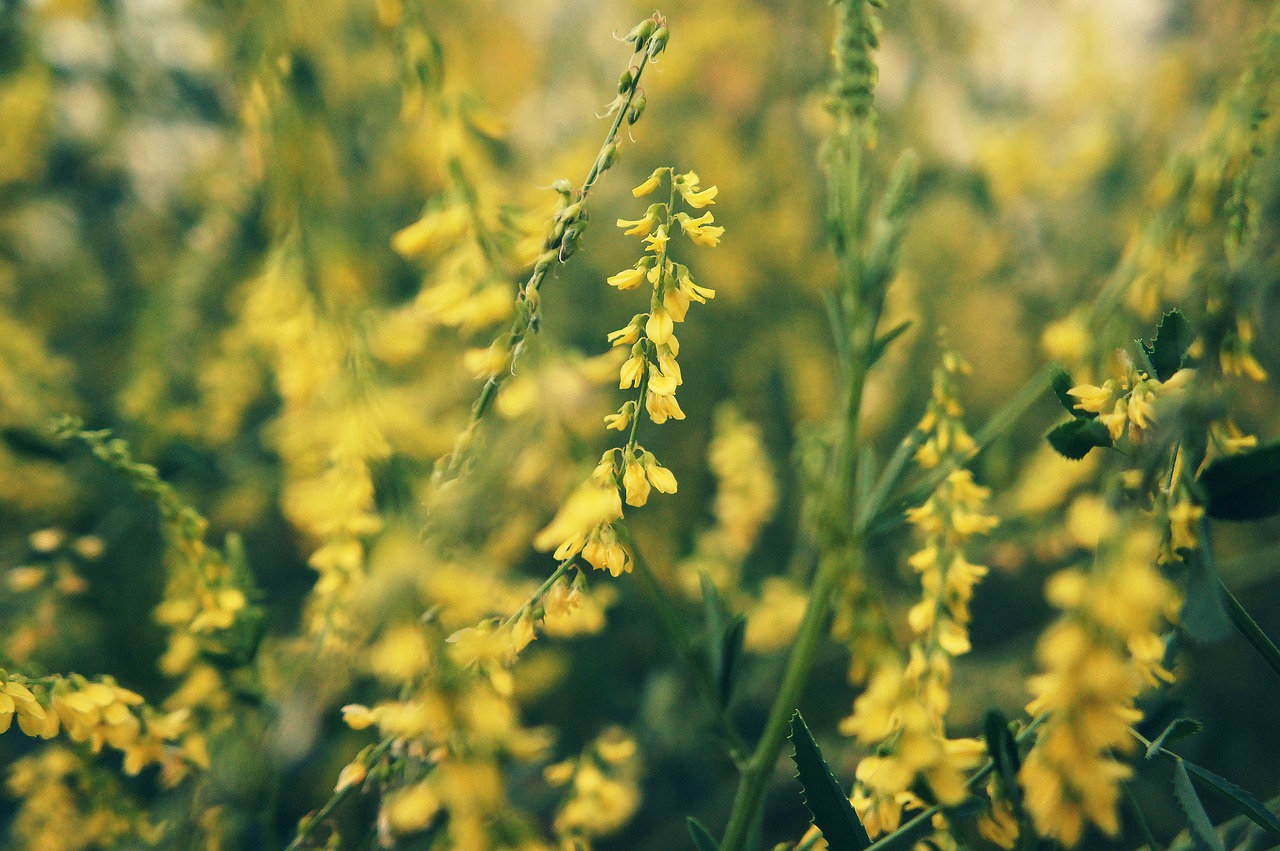
Organic Soil Amendments
When it comes to nurturing your herb garden, play a pivotal role in enhancing the soil's fertility and structure. Think of these amendments as the vitamins your plants need to thrive. By enriching your soil with organic materials, you’re not just feeding the plants; you’re creating a vibrant ecosystem that promotes healthy growth and robust flavor.
One of the most popular organic amendments is compost. This magical mix of decomposed organic matter not only adds nutrients but also improves soil structure, helping with drainage and moisture retention. If you’re looking to create your own compost, consider kitchen scraps like vegetable peels, coffee grounds, and eggshells. Just remember to balance greens (nitrogen-rich materials) with browns (carbon-rich materials) for optimum results.
Another fantastic option is worm castings. These tiny nuggets are packed with nutrients and beneficial microbes that can significantly boost your soil's health. Incorporating worm castings into your soil can lead to increased microbial activity, which is essential for breaking down nutrients and making them available to your herbs. If you haven't tried vermiculture yet, it's a fun and rewarding way to produce your own organic fertilizer!
Additionally, consider adding materials like bone meal and blood meal to your soil. Bone meal is an excellent source of phosphorus, which is crucial for root development and flowering, while blood meal provides a quick nitrogen boost. However, be cautious with the amounts you use, as too much can lead to nutrient burn.
To give you a clearer picture, here’s a simple table outlining some common organic amendments and their benefits:
| Organic Amendment | Benefits |
|---|---|
| Compost | Improves soil structure, enhances nutrient content, promotes moisture retention. |
| Worm Castings | Rich in nutrients, boosts microbial activity, improves soil aeration. |
| Bone Meal | High in phosphorus, supports root development and flowering. |
| Blood Meal | Quick source of nitrogen, promotes leafy growth. |
It's also important to note that mulching with organic materials like straw, wood chips, or shredded leaves can significantly improve soil health. Mulch not only suppresses weeds but also breaks down over time, adding nutrients back into the soil. Plus, it helps retain moisture, which is a win-win for your herbs!
Incorporating these organic amendments into your herb garden is a surefire way to set the stage for healthy, thriving plants. Just remember to mix them well into the soil before planting and to continually monitor your soil's health as your herbs grow. The more you enrich your soil, the more flavorful and aromatic your herbs will be!
- What are organic soil amendments? Organic soil amendments are natural materials added to the soil to improve its fertility and structure.
- How do I apply compost to my herb garden? Mix compost into the top few inches of soil before planting or use it as a top dressing around established plants.
- Can I use store-bought fertilizers instead of organic amendments? While store-bought fertilizers can be effective, organic amendments provide additional benefits such as improved soil health and microbial activity.
- How often should I add organic amendments to my garden? It’s best to add organic amendments at the beginning of each growing season, but you can also top-dress throughout the season as needed.

Drainage Solutions
When it comes to growing herbs, one of the most crucial aspects to consider is drainage. Herbs thrive in well-drained soil, which allows their roots to breathe and prevents the dreaded root rot. Imagine your herbs as little swimmers in a pool; if the pool is too shallow (or too wet), they can't swim freely and might drown. So, how do we ensure our herb garden has the perfect drainage?
First off, if you're planting directly in the ground, it's essential to assess your soil type. Sandy soils typically drain well, while clay soils can hold too much moisture. If you find yourself working with heavy clay, consider incorporating organic matter, such as compost or peat moss, to improve drainage. This not only helps with water retention but also boosts soil fertility. You can think of it as giving your herbs a cozy blanket to keep them warm and dry!
If you're using containers, the choice of pot is equally important. Always opt for pots with drainage holes at the bottom. This allows excess water to escape, preventing soggy roots. Additionally, you might want to create a drainage layer at the bottom of the pot. You can use materials like pebbles, broken terracotta pots, or even pieces of old cloth. This layer acts like a safety net, catching excess water before it can cause harm.
Here’s a quick table summarizing some effective drainage solutions:
| Solution | Description |
|---|---|
| Soil Amendments | Mixing compost or peat moss into heavy soils to improve drainage. |
| Drainage Holes | Using pots with holes to allow excess water to escape. |
| Drainage Layer | Adding pebbles or broken pots at the bottom of containers. |
| Raised Beds | Building raised beds to encourage better drainage and soil aeration. |
Another effective strategy is to create raised beds. Not only do they provide excellent drainage, but they also warm up faster in the spring, giving your herbs a head start. Think of it as placing your herbs on a pedestal, allowing them to soak in the sun while keeping their feet dry!
Lastly, always monitor your herbs for signs of overwatering, such as yellowing leaves or a mushy stem. If you notice these symptoms, it might be time to reassess your drainage solutions. Remember, healthy herbs are happy herbs, and a little attention to drainage can go a long way in ensuring your garden flourishes!
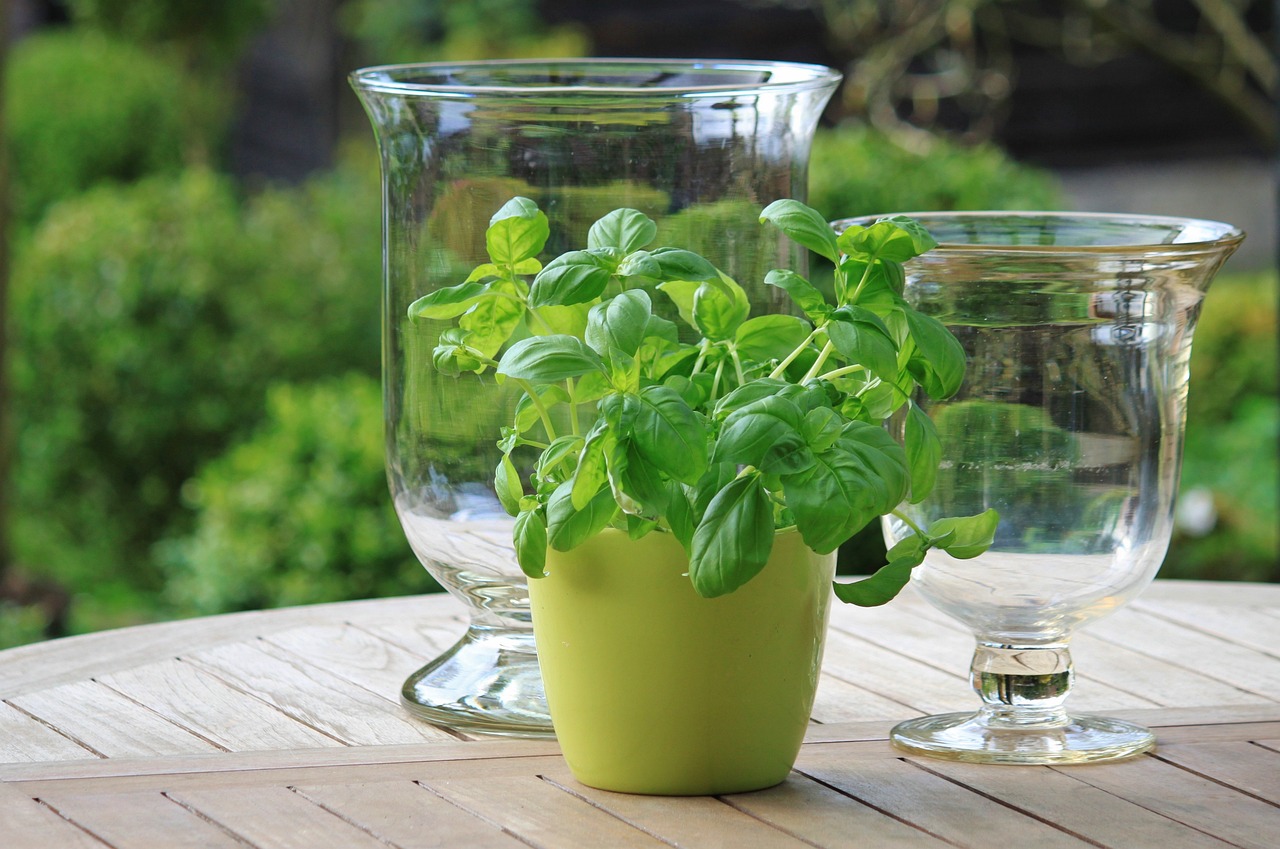
Choosing Containers vs. In-Ground Planting
When it comes to growing herbs, one of the biggest decisions you'll face is whether to use containers or plant directly in the ground. Each method has its own set of advantages and disadvantages, and the right choice often depends on your space, lifestyle, and the specific herbs you want to grow. Containers offer flexibility and mobility, allowing you to position your herbs in the best light or move them indoors during harsh weather. This can be particularly beneficial for those living in regions with unpredictable climates. On the other hand, in-ground planting provides a more stable environment for your herbs, allowing for deeper root systems and often leading to larger, more robust plants.
Consider the following factors when making your decision:
- Space Availability: Do you have a dedicated garden bed, or are you limited to a balcony or patio? Containers can fit in smaller spaces, while in-ground planting requires more room.
- Herb Types: Some herbs, like basil and mint, thrive in containers, while others, such as rosemary and thyme, can do well in the ground. Research the specific needs of your chosen herbs.
- Maintenance: Container gardening often requires more frequent watering and fertilizing, as the soil can dry out faster than in-ground beds. Are you ready to commit to this extra care?
Another important aspect to consider is the drainage. Containers need to have drainage holes to prevent water from pooling at the bottom, which can lead to root rot. In contrast, in-ground planting typically has better natural drainage, but you may need to amend your soil to improve it. If you choose containers, make sure to use high-quality potting soil that retains moisture while allowing excess water to escape.
Ultimately, the decision between containers and in-ground planting should align with your gardening goals and lifestyle. If you enjoy the idea of rearranging your herbs or bringing them inside during colder months, containers might be the way to go. However, if you prefer a more permanent garden setup and have the space, in-ground planting could yield a more abundant harvest. Whichever method you choose, the joy of growing your own herbs is sure to elevate your culinary adventures!
Q: Can I grow herbs indoors in containers?
A: Absolutely! Many herbs can thrive indoors as long as they receive sufficient sunlight. Consider placing them near a south-facing window or using grow lights.
Q: How often should I water my container herbs?
A: Container herbs typically need more frequent watering than in-ground plants. Check the soil moisture regularly and water when the top inch feels dry.
Q: What herbs grow best in containers?
A: Herbs like basil, parsley, chives, and mint are excellent choices for container gardening due to their relatively shallow root systems.

Watering and Irrigation
When it comes to nurturing your herb garden, proper watering techniques are absolutely essential. Think of watering as the lifeblood of your plants; too much or too little can spell disaster. So, how do you strike that perfect balance? First, it’s important to understand that different herbs have different water needs. For instance, basil loves moisture, while rosemary prefers to be on the drier side. This means that you need to tailor your watering routine based on the specific herbs you’ve chosen to cultivate.
Additionally, the method of irrigation you choose can significantly impact the health of your herbs. Traditional watering with a garden hose or watering can is effective, but consider exploring more sophisticated options like drip irrigation systems. These allow for targeted watering, ensuring that the roots receive the moisture they crave without saturating the foliage, which can lead to fungal diseases. If you’re using containers, make sure they have adequate drainage holes to prevent water from pooling at the bottom, as this can lead to root rot.
Now, let’s dive into some best practices for watering. A good rule of thumb is to water deeply but infrequently, encouraging roots to grow deeper into the soil. Here are a few tips to keep your herbs thriving:
- Water in the early morning or late afternoon to reduce evaporation.
- Use a moisture meter to check the soil's moisture level before watering.
- Mulch around your herbs to retain moisture and suppress weeds.
It's also crucial to recognize the signs of overwatering. Your herbs may start to exhibit yellowing leaves, wilting, or even a mushy texture. If you notice these symptoms, it’s a clear indication that you need to adjust your watering routine. On the flip side, if your herbs are looking dry and crispy, it’s time to give them a drink! Establishing a consistent watering schedule based on your garden's specific needs will go a long way in maintaining herb health.
In summary, watering and irrigation are not just chores; they are vital practices that require attention and care. By understanding the unique needs of your herbs and employing effective watering techniques, you’ll set the stage for a flourishing herb garden that’s bursting with flavor and vitality. So grab that watering can and get ready to watch your garden thrive!
Q: How often should I water my herbs?
A: It depends on the type of herbs and the environment. Generally, most herbs need about 1 inch of water per week, either from rainfall or supplemental watering.
Q: Can I use tap water for my herbs?
A: Yes, but let the water sit for 24 hours to allow chlorine to evaporate before using it on your herbs.
Q: What should I do if my herbs are wilting?
A: Check the soil moisture. If it’s dry, give them a good watering. If the soil is wet, consider that you may be overwatering.
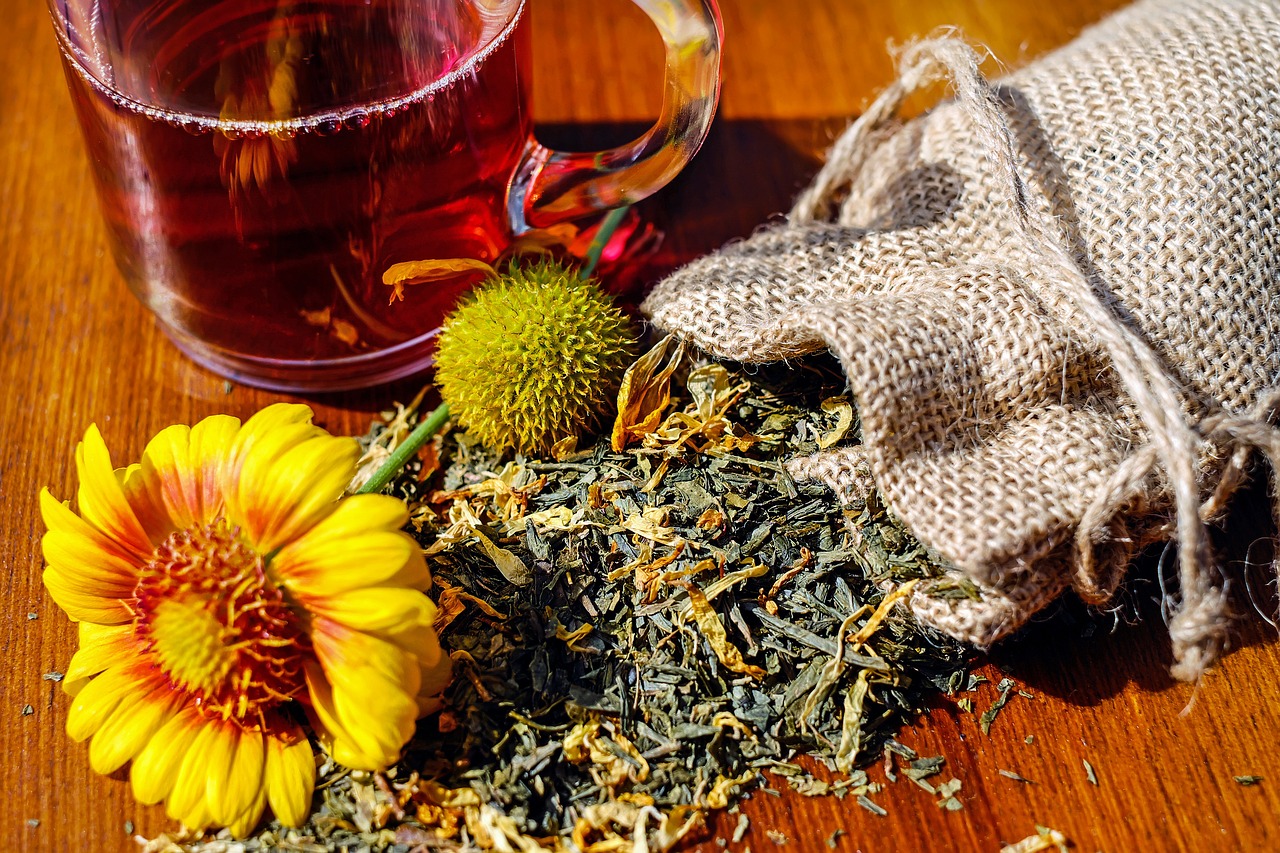
Signs of Overwatering
Overwatering is one of the most common issues that herb gardeners face, and it can lead to a plethora of problems if not addressed promptly. You might be thinking, “How do I know if I’m giving my herbs too much water?” Well, let’s dive into the signs that your plants are sending you. First and foremost, yellowing leaves are often the first indicator. If you notice that the leaves of your herbs are turning a sickly yellow, it could mean they are drowning in excess moisture. This happens because the roots are not getting enough oxygen due to the waterlogged soil.
Another telltale sign is wilting. Surprisingly, overwatered plants can wilt just like those that are under-watered. This paradox occurs because the roots are damaged and unable to absorb water effectively. If your herbs look droopy despite the soil being wet, it’s a clear cry for help. Additionally, keep an eye out for root rot, a serious condition caused by excessive moisture. If you pull up a plant and notice a mushy, blackened root system, it’s time to take action!
Now, let’s talk about fungal growth. If you see white, fluffy mold developing on the surface of the soil or around the base of your herbs, it’s a sure sign of overwatering. This not only affects your plants but can also spread to other areas of your garden. Lastly, if your herbs are experiencing stunted growth, it may be due to the roots being unable to function properly in overly saturated conditions. Healthy roots are essential for nutrient uptake, and when they are compromised, your plants won’t thrive.
To help you quickly identify these signs, here’s a simple table summarizing the symptoms of overwatering:
| Signs | Description |
|---|---|
| Yellowing Leaves | Leaves turn yellow due to lack of oxygen in waterlogged soil. |
| Wilting | Plants appear droopy despite wet soil conditions. |
| Root Rot | Mushy, blackened roots indicate severe overwatering. |
| Fungal Growth | White mold on soil surface or plant base. |
| Stunted Growth | Plants fail to grow due to compromised root health. |
In summary, keeping a watchful eye on your herbs and recognizing these signs can save your garden from the pitfalls of overwatering. Remember, the key to a thriving herb garden is balance. Water your herbs with care, and they will reward you with lush growth and vibrant flavors!
Q: How often should I water my herbs?
A: It depends on the type of herb and the climate, but a general rule of thumb is to water when the top inch of soil feels dry.
Q: Can I save my herbs if they are overwatered?
A: Yes! If you catch it early, you can repot your herbs in dry soil and trim away any rotten roots.
Q: What type of soil is best for herbs?
A: A well-draining soil mix is ideal. Consider using potting soil blended with sand or perlite for better drainage.
Q: How can I prevent overwatering?
A: Always check the moisture level before watering and ensure your pots have drainage holes.

Watering Schedule Tips
Creating an effective watering schedule can be the difference between a flourishing herb garden and a struggling one. It's not just about pouring water on your plants; it's about understanding their unique needs and the environmental factors at play. To start, consider the climate in your area. For instance, if you live in a hot, dry region, your herbs might require more frequent watering compared to those in cooler, humid climates. But how do you know exactly when to water? One way is to stick your finger into the soil about an inch deep. If it feels dry, it's time to water. If it’s still moist, hold off for a day or two. This simple test can prevent the dreaded overwatering that leads to root rot.
Another aspect to consider is the time of day you water. Early morning is often recommended as the ideal time because it allows the plants to absorb moisture before the heat of the day evaporates it. However, if mornings are hectic for you, late afternoon can also work, just make sure to water early enough that the leaves have time to dry before nightfall to prevent fungal diseases.
Moreover, the type of herb you are growing can influence your watering schedule. For example, Mediterranean herbs like rosemary and thyme prefer drier conditions and can tolerate less frequent watering, while basil and cilantro thrive in consistently moist soil. Here’s a quick reference table to help you determine the watering frequency for some common herbs:
| Herb | Watering Frequency |
|---|---|
| Basil | 2-3 times a week |
| Thyme | Once a week |
| Rosemary | Once every 10 days |
| Cilantro | 2-3 times a week |
| Mint | 2-3 times a week |
It's also beneficial to keep an eye on the weather. If you expect rain, you might skip a watering session, but if the forecast is dry, you might need to adjust your schedule accordingly. Additionally, during the hotter months, consider increasing your watering frequency, while in the cooler months, you might find that your herbs need less water. Remember, consistency is key, and developing a routine can help you keep track of your watering schedule. Setting reminders on your phone or using a gardening app can be a great way to stay organized.
In summary, understanding your herbs' specific needs, monitoring the soil moisture, and adjusting your watering schedule based on environmental factors will lead to a thriving herb garden. Happy gardening!
- How often should I water my herbs? It depends on the type of herb and your climate. Generally, most herbs need watering 2-3 times a week.
- Can I overwater my herbs? Yes, overwatering can lead to root rot and other issues. Always check the soil moisture before watering.
- Is it better to water in the morning or evening? Morning is typically best as it allows plants to absorb moisture before the heat of the day.
- What should I do if my herbs are wilting? Check the soil moisture. If it's dry, give them a good watering. If the soil is wet, you may have overwatered.
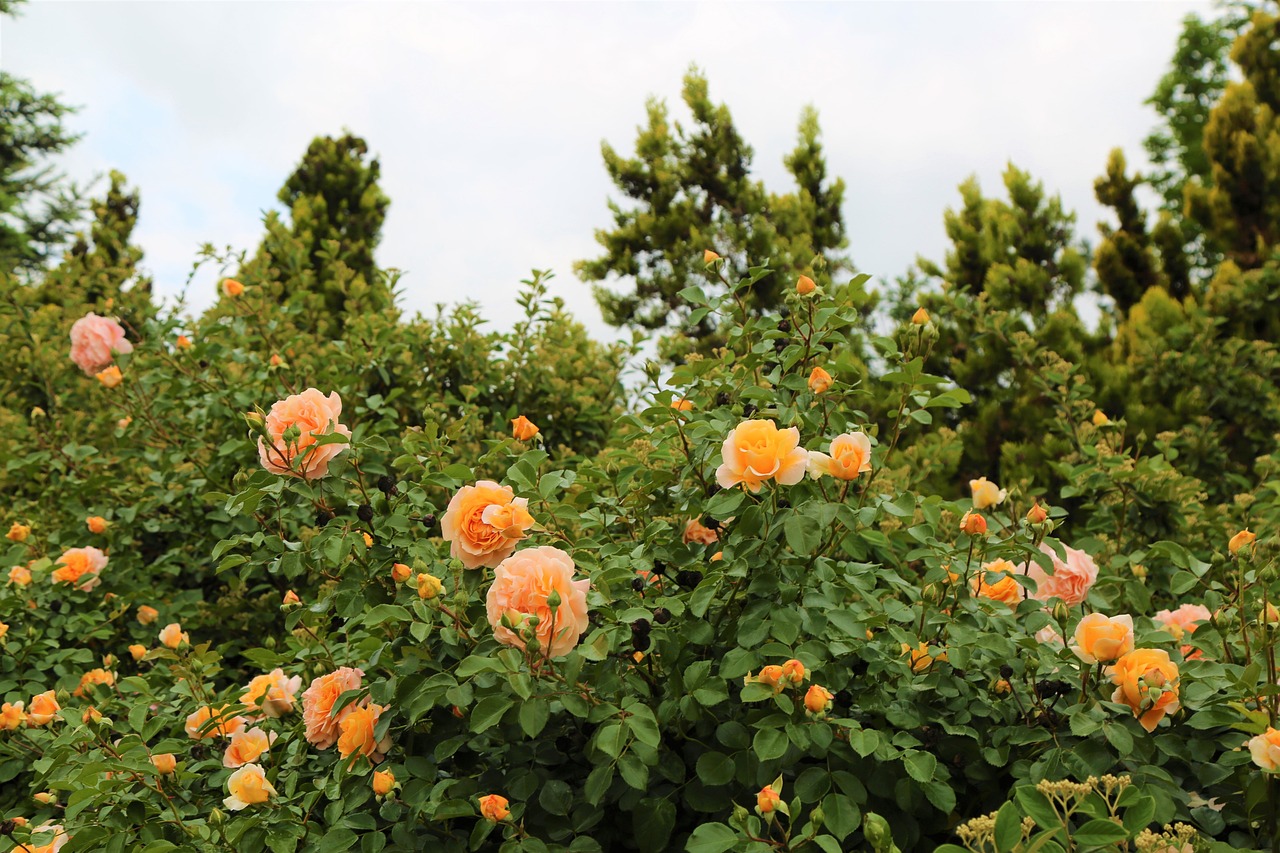
Pest and Disease Management
Managing pests and diseases in your herb garden is not just important; it's absolutely essential for a thriving and productive garden. Whether you're a seasoned gardener or just starting, understanding how to protect your precious herbs from common threats can save you time, effort, and disappointment. Think of your garden as a fortress, with you as the vigilant guardian, always on the lookout for invaders that could wreak havoc on your hard work.
First off, let’s talk about the **common pests** that could potentially invade your garden. These little critters can come in various forms, from aphids to spider mites, and recognizing them early is key to preventing a full-blown infestation. For instance, aphids, those tiny green or black bugs, love to suck the sap from your plants, weakening them over time. Similarly, whiteflies can be just as pesky, often hiding on the undersides of leaves. If you spot any of these unwelcome guests, it’s time to take action!
But don’t worry, you don’t have to resort to harsh chemicals to keep pests at bay. There are plenty of **natural pest control methods** that are not only effective but also environmentally friendly. Here are some strategies you might consider:
- Companion Planting: Some plants naturally repel pests. For example, planting marigolds alongside your herbs can deter nematodes and aphids.
- Neem Oil: This natural pesticide is derived from the seeds of the neem tree and can effectively combat a variety of pests without harming beneficial insects.
- Handpicking: For larger pests like caterpillars or slugs, sometimes the best method is simply to remove them by hand. It’s effective and gives you a chance to inspect your plants closely.
In addition to pests, diseases can also pose a significant threat to your herb garden. Fungal infections, such as powdery mildew, can quickly spread and damage your plants. Keeping your garden well-ventilated and avoiding overhead watering can help prevent such issues. Regularly inspecting your plants for any signs of distress—like yellowing leaves or unusual spots—will allow you to catch diseases early on.
Another useful tactic is to maintain a healthy garden ecosystem. This means encouraging beneficial insects, like ladybugs and lacewings, which are natural predators of common herb pests. By creating a balanced environment, you can reduce the likelihood of pest outbreaks and disease. Think of it as creating a community where everyone plays a role in maintaining the health of your garden.
Lastly, remember that prevention is always better than cure. Regularly rotating your herbs, practicing good sanitation by cleaning up debris, and ensuring your soil is healthy will go a long way in keeping your herb garden flourishing. By staying proactive, you can enjoy the beauty and bounty of your herb garden without the constant worry of pests and diseases.
Q: How can I tell if my herbs are infested with pests?
A: Look for signs such as discolored leaves, visible insects, or sticky residue on your plants. Regular inspections can help you catch problems early.
Q: What are some natural ways to deter pests?
A: Companion planting, using neem oil, and handpicking pests are all effective natural methods to keep your garden healthy.
Q: How can I prevent diseases in my herb garden?
A: Ensure good air circulation, avoid overhead watering, and keep your garden clean from debris to minimize the risk of fungal infections and other diseases.

Identifying Common Pests
When it comes to nurturing your herb garden, one of the most important skills to develop is the ability to identify common pests. These little invaders can wreak havoc on your plants if not caught early. Imagine spending weeks cultivating your herbs, only to find them wilting away due to a pest infestation. It’s a gardener's nightmare! But fear not; with a keen eye and some knowledge, you can spot these troublemakers before they become a serious issue.
Common pests that often target herb gardens include aphids, whiteflies, spider mites, and slugs. Each of these pests has distinct characteristics that can help you identify them quickly. For instance, aphids are tiny, soft-bodied insects that often cluster on the undersides of leaves, sucking out the sap and causing leaves to curl. Whiteflies, on the other hand, are small, white, moth-like insects that can be seen fluttering around your plants when disturbed. Spider mites are tiny and can be challenging to see without a magnifying glass, but they leave fine webbing on the leaves as a telltale sign of their presence. Lastly, slugs tend to leave behind a slimy trail and can create irregular holes in your herb leaves, making them easy to spot during the evening or morning hours.
To help you remember these pests and their signs, here’s a quick reference table:
| Pest | Identification | Damage |
|---|---|---|
| Aphids | Tiny, green or black insects, often found in clusters | Leaf curling, stunted growth |
| Whiteflies | Small, white, moth-like insects that fly when disturbed | Yellowing leaves, poor plant vigor |
| Spider Mites | Tiny, red or green dots; fine webbing on leaves | Speckled leaves, leaf drop |
| Slugs | Soft-bodied, slimy creatures; irregular holes in leaves | Leaf damage, stunted growth |
Understanding these pests and their behaviors is crucial for early intervention. For example, if you notice your basil leaves curling and find small green insects underneath, you can act quickly to remove the aphids before they spread. Regularly inspecting your plants and being aware of what to look for can save you a lot of heartache and keep your herb garden thriving.
But identifying pests is just the first step. Once you know what you’re dealing with, you can implement effective control measures, whether that means introducing beneficial insects, using organic sprays, or simply removing the pests by hand. Remember, a proactive approach is key to maintaining a healthy herb garden!
- What are the signs of pest infestations in herbs?
Look for leaf discoloration, wilting, or visible insects on the plants. - How can I prevent pests in my herb garden?
Regularly inspect your plants, maintain healthy soil, and encourage beneficial insects. - Are there natural remedies for pest control?
Yes, options include neem oil, insecticidal soap, and introducing ladybugs.
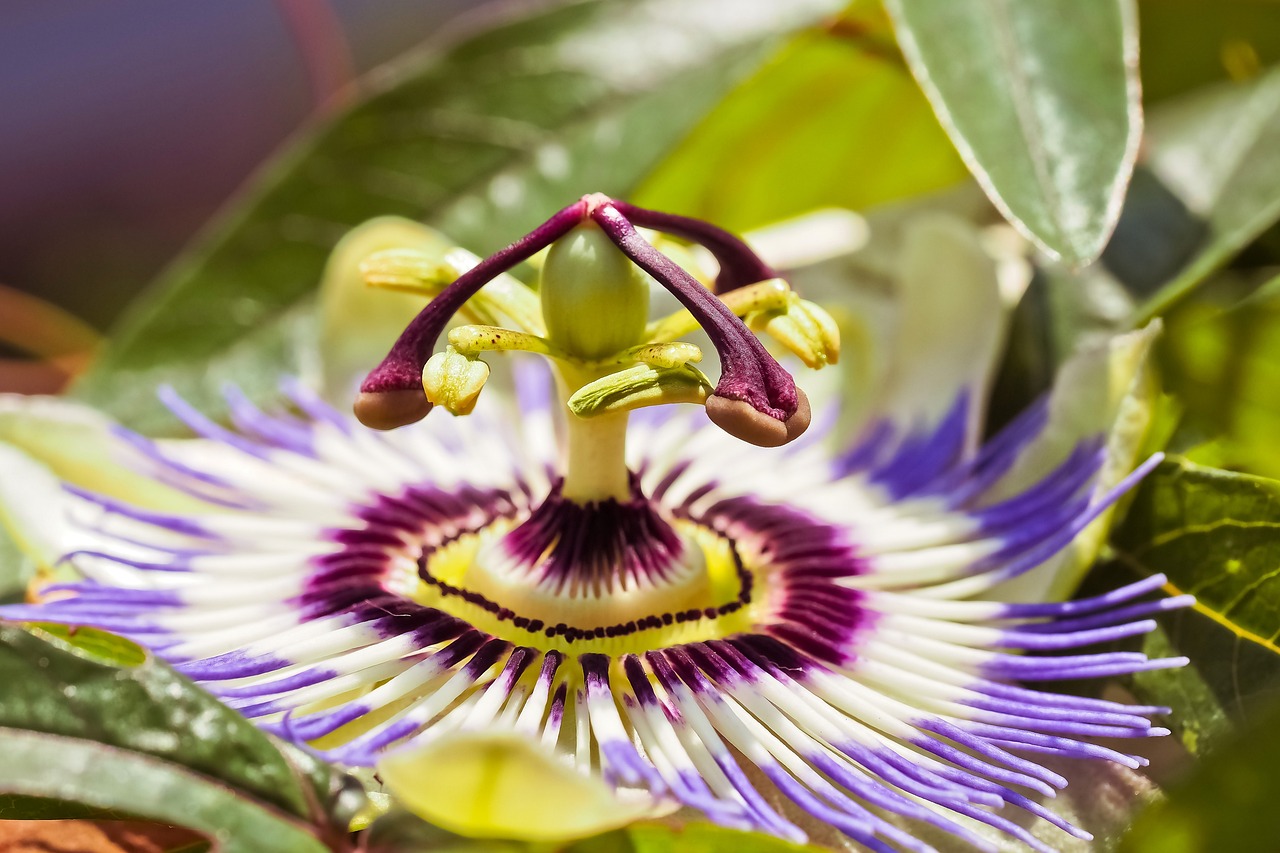
Natural Pest Control Methods
When it comes to maintaining a thriving herb garden, can be your best ally. Instead of reaching for chemical pesticides that can harm beneficial insects and the environment, consider using methods that promote a balanced ecosystem. One effective approach is companion planting, which involves growing certain plants together to naturally deter pests. For instance, planting marigolds alongside your herbs can repel nematodes and aphids, keeping your garden healthy and vibrant.
Another powerful tool in your pest management arsenal is the use of organic sprays. These can be made from simple household ingredients, such as garlic, hot pepper, or even soap. A homemade garlic spray, for example, can deter a variety of pests due to its strong scent. To create a basic garlic spray, blend a few cloves of garlic with water, strain the mixture, and then spray it directly onto the affected plants. This not only helps to keep pests at bay but also adds a layer of protection without introducing harmful chemicals into your garden.
Additionally, introducing beneficial insects can significantly aid in pest control. Ladybugs and lacewings are natural predators of aphids and other common garden pests. By attracting these helpful insects to your garden, you can reduce pest populations without any harmful side effects. You can encourage their presence by planting flowers like dill, fennel, and yarrow, which provide food and habitat for these beneficial critters.
It's also essential to maintain good garden hygiene. Regularly removing weeds and debris can reduce hiding spots for pests and diseases. Furthermore, rotating your herbs each season can prevent pest populations from becoming established. For instance, if you grew basil in one area last year, consider planting it in a different spot this year to disrupt any potential pest cycles.
In summary, natural pest control methods not only protect your herbs but also promote a healthier garden environment. By implementing strategies like companion planting, using organic sprays, attracting beneficial insects, and maintaining garden hygiene, you can effectively manage pests while nurturing your herb garden. Remember, a proactive approach is the key to a flourishing herb garden!
Q: What are some common pests that affect herb gardens?
A: Common pests include aphids, spider mites, whiteflies, and caterpillars. Regular inspection of your plants can help you catch these pests early.
Q: Are natural pest control methods effective?
A: Yes, natural methods can be very effective when used consistently and in combination with other garden maintenance practices.
Q: How can I attract beneficial insects to my garden?
A: Planting a variety of flowers, especially those that bloom at different times, can attract beneficial insects. Herbs like dill, fennel, and parsley are particularly effective.
Q: Can I use chemical pesticides if natural methods fail?
A: While it's best to stick with natural methods, if you must use chemical pesticides, choose ones that are specifically designed for use in gardens and follow the instructions carefully to minimize harm to beneficial insects.
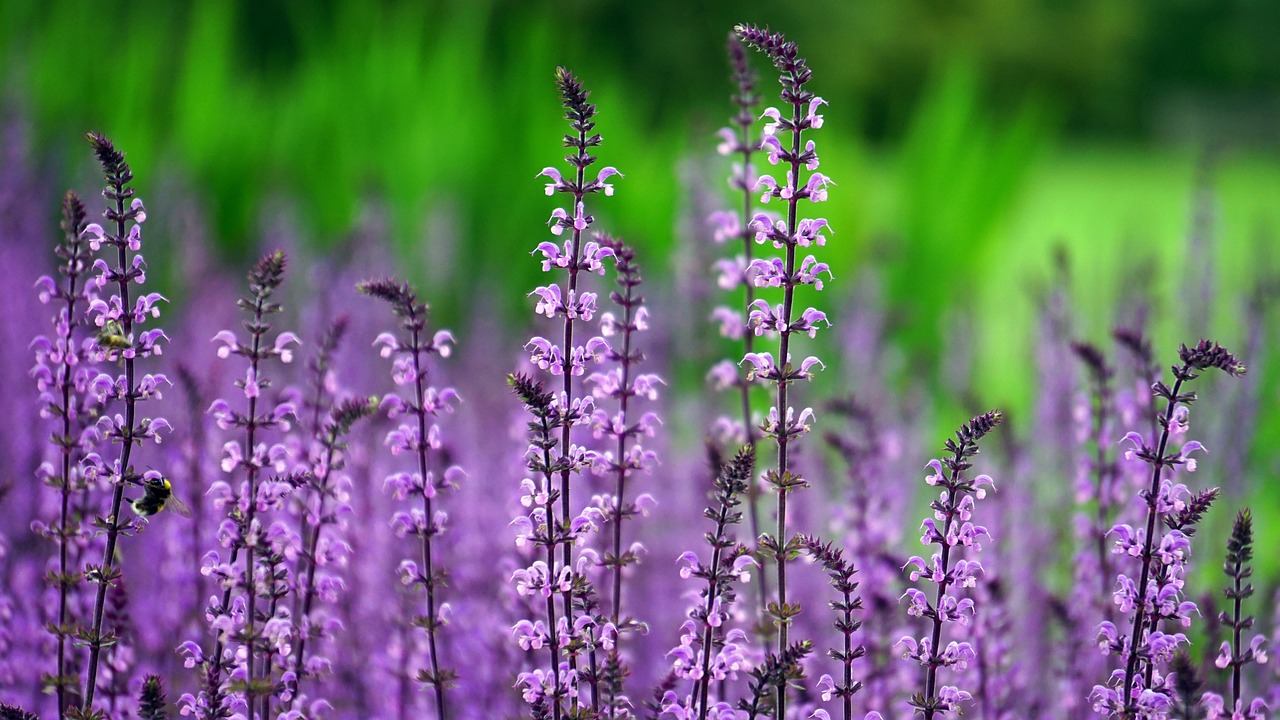
Harvesting Techniques
Knowing when and how to harvest your herbs is crucial for maximizing both flavor and growth. The process of harvesting isn’t just about snipping off a few leaves; it’s an art that requires a keen eye and a bit of understanding about each herb's unique needs. Imagine your herbs as a fine wine; the right timing can elevate their taste and aroma to a whole new level. So, how do you ensure that your herbs are harvested at their peak?
First, timing is everything. Each herb has its own optimal harvest window, and it’s essential to pay attention to this. For instance, basil is best harvested just before it flowers, as this is when its leaves are most fragrant and flavorful. On the other hand, herbs like thyme can be harvested throughout their growing season, but the best flavor is often found just before they bloom. Understanding the growth cycle of your herbs can make all the difference in your culinary creations.
When it comes to the actual harvesting methods, you want to be gentle yet decisive. Use sharp scissors or garden shears to make clean cuts; this minimizes damage to the plant and promotes healthy regrowth. For leafy herbs like parsley and cilantro, snipping the outer leaves while allowing the inner leaves to continue growing is a good strategy. Conversely, for woody herbs like rosemary, cutting back the stems can encourage bushier growth. Remember, the goal is to encourage your herbs to thrive while also enjoying their bounty.
Another important aspect of harvesting is how you store your freshly cut herbs. After harvesting, it’s best to keep them fresh for as long as possible. You can store herbs like basil and parsley in a glass of water, much like a bouquet of flowers, or wrap them in a damp paper towel and place them in a plastic bag in the refrigerator. This method keeps them hydrated and vibrant. For long-term storage, consider drying or freezing your herbs. Drying can be done by hanging them upside down in a cool, dark place, while freezing can preserve their flavor for months to come.
| Herb | Best Time to Harvest | Harvesting Method | Storage Tips |
|---|---|---|---|
| Basil | Before flowering | Snip leaves from the top | Store in water or wrap in a damp towel |
| Cilantro | When leaves are young | Cut outer leaves first | Refrigerate in a damp towel |
| Rosemary | Throughout the growing season | Cut back stems | Hang to dry or freeze |
In conclusion, harvesting your herbs is not just a task; it’s a rewarding experience that ties you to your garden. By paying attention to timing, employing the right methods, and storing your herbs properly, you’ll ensure that every meal is infused with the freshest flavors. So grab those shears and dive into the delightful world of herb harvesting!
Q: When is the best time to harvest herbs?
A: The best time to harvest herbs is generally in the morning after the dew has dried but before the sun gets too hot. This helps preserve their essential oils and flavor.
Q: Can I harvest herbs all season long?
A: Yes, many herbs can be harvested throughout their growing season. However, it’s important to monitor their growth and avoid over-harvesting, which can stunt their development.
Q: What's the best way to store fresh herbs?
A: Fresh herbs can be stored in a glass of water, wrapped in a damp paper towel, or even frozen for long-term use. Each method helps maintain freshness and flavor.
Q: How do I know if I'm over-harvesting my herbs?
A: If your herbs are not regrowing as quickly or if they look wilted and stressed, you may be over-harvesting. Always leave enough foliage on the plant to ensure it can continue to thrive.

Timing Your Harvest
When it comes to harvesting your herbs, timing is everything! Imagine standing in your garden, surrounded by fragrant plants, and knowing just the right moment to snip those leaves for maximum flavor. It’s like catching a wave at its peak—too early, and you miss out on the full experience; too late, and the flavor can diminish. So, how do you know when to harvest? Well, it all boils down to a few key factors that can help you make the most of your herb garden.
First, consider the growth stage of your herbs. Most herbs are best harvested just before they start to flower. This is when the leaves are packed with essential oils and flavor, making them perfect for culinary use. For example, basil is at its peak just before it blooms, so keep an eye on those flower buds. If you see them starting to form, it’s time to act! On the other hand, herbs like mint and oregano can be harvested throughout their growing season, allowing you to enjoy their flavors more frequently.
Another important aspect to consider is the time of day. The best time to harvest herbs is in the morning after the dew has dried but before the sun gets too hot. This is when the essential oils are most concentrated, resulting in the best flavor. Think of it as catching your herbs in their prime—just like a ripe fruit ready to be picked! If you harvest in the afternoon, when the sun is blazing, you might find that the oils have evaporated, leaving your herbs less flavorful.
To help you remember the best times to harvest various herbs, here’s a quick reference table:
| Herb | Best Harvest Time |
|---|---|
| Basil | Just before flowering |
| Mint | Throughout the growing season |
| Oregano | Before flowering |
| Thyme | Just before blooming |
| Parsley | When leaves are vibrant green |
Once you’ve identified the right time to harvest, it’s crucial to use proper techniques to ensure your herbs continue to thrive. For most herbs, you’ll want to pinch or cut the stems just above a leaf node. This encourages bushier growth and prevents the plant from becoming leggy. Think of it as giving your herbs a little haircut! Always use clean, sharp scissors or pruning shears to minimize damage to the plant and reduce the risk of disease.
In conclusion, timing your herb harvest not only enhances flavor but also promotes healthy growth. By paying attention to growth stages, the time of day, and employing proper harvesting techniques, you can ensure that your herbs remain vibrant and flavorful throughout the season. So, grab those scissors and get ready to enjoy the fruits of your labor!
- How often should I harvest my herbs? It depends on the type of herb, but generally, you can harvest them every few weeks. Just be sure to leave enough foliage for the plant to continue growing!
- Can I harvest herbs after they flower? Yes, but the flavor may not be as strong. It's best to harvest before flowering for the best taste.
- What should I do if my herbs are not growing well? Check for proper sunlight, watering, and soil conditions. Sometimes, a little adjustment can make a big difference!

Proper Harvesting Methods
When it comes to harvesting herbs, the technique you use can greatly influence both the health of the plant and the flavor of your culinary creations. not only ensure that your herbs remain productive but also enhance their taste and aroma, making your dishes pop with flavor. So, how do you go about it? Let’s dive into some effective strategies!
First and foremost, timing is everything. Herbs should ideally be harvested in the morning after the dew has dried but before the sun reaches its peak intensity. This is when the essential oils are at their highest concentration, resulting in herbs that are bursting with flavor. For most herbs, the best time to harvest is just before they begin to flower, as this is when they are most aromatic. For example, basil and mint are at their prime just before flowering, while herbs like rosemary can be harvested at any time during their growth cycle.
When it comes to the actual method of harvesting, you want to be gentle yet decisive. Use sharp scissors or garden shears to snip off the stems, making sure to cut just above a leaf node. This encourages the plant to branch out and grow more leaves, rather than just focusing on the remaining stem. For herbs like chives or oregano, you can cut back around one-third of the plant at a time, which helps maintain its vigor and encourages new growth.
Another crucial aspect of proper harvesting is knowing how to store your herbs post-harvest. After cutting, immediately place the herbs in a container of water, similar to how you would treat fresh flowers. This keeps them hydrated and fresh. If you’re not using them right away, consider drying them. Drying herbs can be done by hanging them upside down in a cool, dark place or using a dehydrator. Just ensure that they are completely dry before storing them in airtight containers to prevent mold growth.
Lastly, always remember to leave some leaves on the plant when harvesting. This practice not only allows the plant to continue growing but also ensures that you have a steady supply of fresh herbs for your culinary adventures. Think of your herb garden as a well-tended friendship; you must nurture it to keep it flourishing. So, go ahead, snip away, but do so with care and consideration!
- How often should I harvest my herbs? It depends on the type of herb, but generally, you can harvest once a week or as needed, ensuring you leave enough foliage for the plant to continue growing.
- What is the best way to store freshly harvested herbs? For short-term storage, place them in a glass of water like flowers. For long-term, dry them or freeze them in ice cube trays with water or oil.
- Can I harvest herbs in the winter? Yes, if you have a hardy herb like rosemary or thyme, you can harvest them in winter, but growth will be slower.
Frequently Asked Questions
- What are the best herbs to grow in my garden?
Choosing the right herbs depends on your climate, soil type, and personal taste. Popular choices include basil, parsley, cilantro, and mint. If you're just starting out, consider herbs that are easy to grow and can be used in a variety of dishes.
- How do I prepare the soil for my herb garden?
Start by testing your soil's pH to ensure it's suitable for herbs, ideally between 6.0 and 7.0. You can enhance soil fertility by adding organic amendments like compost or worm castings. Good drainage is also essential, so consider adding sand or perlite to improve soil structure.
- Should I plant herbs in containers or in the ground?
This decision largely depends on your space and lifestyle. Containers offer flexibility and are great for small spaces or patios, while in-ground planting can provide more room for growth. Both methods have their pros and cons, so choose what works best for you!
- How often should I water my herb garden?
Herbs generally prefer consistent moisture without being waterlogged. A good rule of thumb is to water deeply once or twice a week, depending on the weather and soil conditions. Always check the top inch of soil; if it's dry, it's time to water!
- What are the signs of overwatering my herbs?
Look out for yellowing leaves, wilting, or a mushy texture. If you notice these symptoms, it's crucial to adjust your watering schedule. Allow the soil to dry out before watering again to prevent root rot.
- How can I manage pests in my herb garden?
Identifying common pests like aphids and spider mites is the first step. You can use natural pest control methods such as companion planting or organic sprays. Keeping your garden healthy and clean will also deter many pests.
- When is the best time to harvest my herbs?
Timing is key! Generally, the best time to harvest is in the morning after the dew has dried but before the heat of the day. This helps preserve the essential oils that give herbs their flavor. Pay attention to the plant's growth; harvesting regularly encourages more growth!
- What is the proper way to harvest herbs?
Use sharp scissors or garden shears to cut stems just above a leaf node. This method encourages new growth and helps keep your plants healthy. After harvesting, store your herbs properly to maintain their freshness—think about drying or freezing them for later use!


















